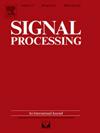Reversible data hiding in encrypted images using prediction error modification and basic block compression
IF 3.4
2区 工程技术
Q2 ENGINEERING, ELECTRICAL & ELECTRONIC
引用次数: 0
Abstract
Reversible data hiding in encrypted images (RDHEI) is an effective method for privacy protection, medical diagnosis, and covert communication. It can also facilitate the management of large amounts of encrypted images. Despite recent advances in RDHEI methods, several issues remain, including the inefficiency of compression and the excess of auxiliary data. To address these issues, this paper proposes a novel RDHEI method based on prediction error modification (PEM) and basic block compression (BBC). PEM greatly increases the occurrence of PE “0” (a PE with a value of 0) and reduces the information entropy of PEs by decreasing the positive PEs or increasing the negative PEs. The modified PEs are then divided into non-overlapping blocks which are subsequently compressed based on the proposed BBC technique. After PEM and image compression, the secret data is embedded into the encrypted image to generate the marked image, from which authorized recipients can extract the hidden payload and recover the original image non-destructively. Experimental results show that the proposed method is highly resistant to statistical analysis, brute force, and differential attacks, and outperforms some state-of-the-art methods in terms of embedding capacity.
求助全文
约1分钟内获得全文
求助全文
来源期刊

Signal Processing
工程技术-工程:电子与电气
CiteScore
9.20
自引率
9.10%
发文量
309
审稿时长
41 days
期刊介绍:
Signal Processing incorporates all aspects of the theory and practice of signal processing. It features original research work, tutorial and review articles, and accounts of practical developments. It is intended for a rapid dissemination of knowledge and experience to engineers and scientists working in the research, development or practical application of signal processing.
Subject areas covered by the journal include: Signal Theory; Stochastic Processes; Detection and Estimation; Spectral Analysis; Filtering; Signal Processing Systems; Software Developments; Image Processing; Pattern Recognition; Optical Signal Processing; Digital Signal Processing; Multi-dimensional Signal Processing; Communication Signal Processing; Biomedical Signal Processing; Geophysical and Astrophysical Signal Processing; Earth Resources Signal Processing; Acoustic and Vibration Signal Processing; Data Processing; Remote Sensing; Signal Processing Technology; Radar Signal Processing; Sonar Signal Processing; Industrial Applications; New Applications.
 求助内容:
求助内容: 应助结果提醒方式:
应助结果提醒方式:


